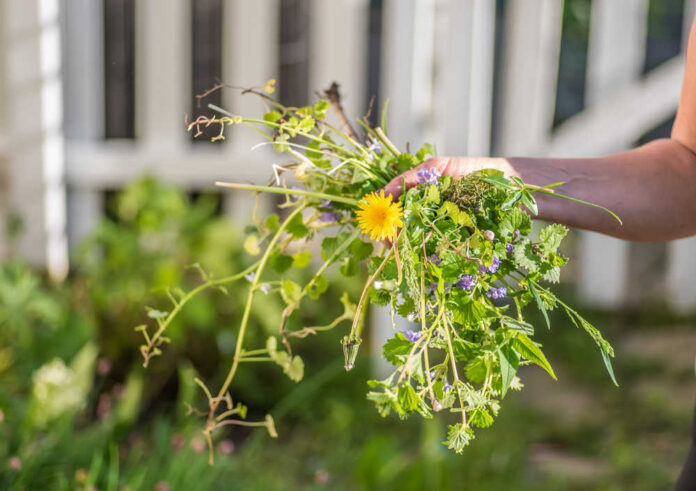
As plants grow, they absorb nutrients from the atmosphere and soil to build their cell structures, develop their leaves and flowers, and produce fruits and seeds to reproduce.
Each plant species has a slightly different set of nutritional needs, but they all require some proportion of:
- Hydrogen
- Carbon
- Oxygen
- Nitrogen
- Phosphorus
- Potassium
- Sulfur
- Calcium
- Magnesium
- Iron
- Boron
- Manganese
- Copper
- Zinc
- Molybdenum
- Nickel
- Chlorine
Plants synthesize these elements into the vitamins, proteins, fats, carbohydrates, and antioxidants that make up their tissues. Coincidentally, our human bodies are constructed from these same essential minerals (plus a few more), and we rely on plants to provide those vital nutrients.
These nutrients are not just in the fruits and vegetables you find in the produce section of your grocery store. You can also find them in your backyard, hiding in plain sight.
Dandelions
Dandelions (Taraxacum officinale) are one of the most abundant and easily recognizable weeds, with their bright yellow flowers and puffy white seeds that blow in the wind.
The entire plant is edible, including the roots. Most people prefer to add the leaves into their salad or steep the plant material in a tea.
It’s long been recognized for its medicinal value and has been proven to be beneficial for cardiovascular health. It may even be a helpful aid for preventing and treating type 2 diabetes.
Daisies
Daisies (Bellis perennis) are another common plant that you probably don’t pay much attention to.
In traditional folk medicine, it’s been used as an expectorant (cough medicine to clear the sinuses), a diuretic (increases urine production to flush out toxins), a vulnerary (to heal wounds), and an anti-inflammatory (for pain and swelling).
These effects are likely due to the particular flavonoids and phenolic acids that daisies produce.
Stinging Nettles
It might seem strange to suggest that stinging nettles (Urtica dioica) can be good for you, especially if you’ve ever had the misfortune of touching it and learning how it got its name.
But if you carefully harvest the leaves with gloves, you can boil and rinse them to remove the needle-like hairs, then saute them like spinach or make a nettle tea.
In addition to being highly nutritious, its antimicrobial properties may help treat urinary tract infections, ulcers, and some types of food poisoning.
Chicory
Chicory (Cichorium intybus) typically has deep blue flowers, but the roots are the most commonly used.
When dried, roasted, and ground, chicory root has a similar taste and appearance to coffee and can be used as a coffee substitute.






















